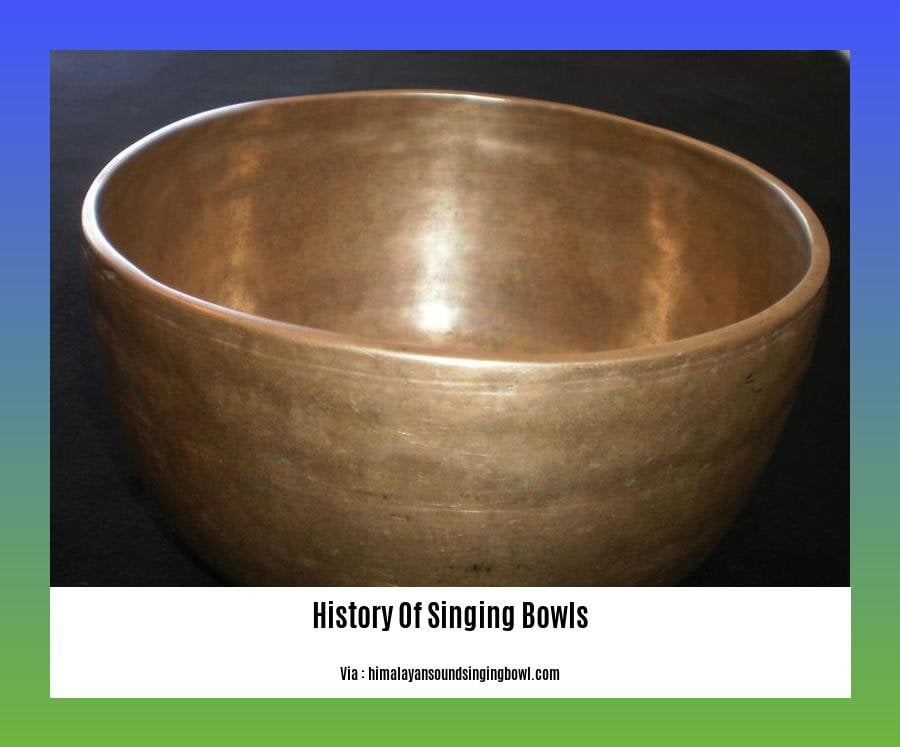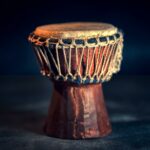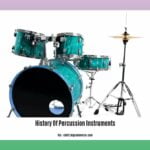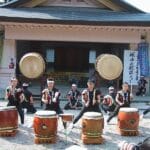Embark on a captivating journey through time and tradition as we delve into the melodious history of singing bowls. These sacred instruments, with their enchanting resonance, have played a pivotal role in Himalayan cultures for centuries. Their origins shrouded in mystery, singing bowls have evolved into powerful tools for meditation, healing, and spiritual practices. Join us as we explore the craftsmanship, cultural significance, and enduring legacy of these treasured vessels of sound.
Key Takeaways:
Singing bowls, originating in Asia, have a rich history spanning over 1000 years.
The Himalayan singing bowls showcased in The Singing Bowl Museum are thought to be some of the oldest of their kind.
Ancient Persian and Khorasan bronze bowls share similarities in metallurgy, construction, and decoration with the earliest singing bowls.
Singing bowls gradually spread from their Himalayan origin to Nepal, India, Tibet, China, Japan, Afghanistan, Vietnam, Egypt, and eventually reached the United States.
Introduced in the early 1970s, singing bowls gained popularity in the US as instruments within the Tibetan music genre.
America pioneered the creation of the first crystal singing bowls in the 1990s, combining the healing properties of acoustics and crystal healing.
Another theory proposes that the initial sound bowls were crafted in Mesopotamia over 5000 years ago, eventually spreading via trade routes to Nepal, India, China, Tibet, Japan, and beyond.
History of Singing Bowls

Singing bowls, emitting mesmerizing sounds, have a captivating history deeply intertwined with spiritual practices, cultures, and healing traditions throughout the ages. While their exact origins remain shrouded in the mists of time, let’s embark on a journey to uncover their rich heritage:
1. Ancient Roots: A Resonance from the Himalayas
- In the heart of the Himalayan mountains, where spirituality and nature converge, singing bowls emerged as sacred instruments around 2,000 years ago.
- Crafted from a variety of metals, including copper, tin, zinc, lead, silver, and gold, these bowls were intimately linked to Buddhist and Hindu rituals.
- Skilled artisans, guided by ancient metallurgy techniques, meticulously hammered and shaped these bowls, imbuing them with unique tones and healing properties.
2. Tibetan Legacy: A Symphony of Sound
- Tibet, a land steeped in spirituality and mysticism, embraced singing bowls as essential components of religious ceremonies and meditation practices.
- Tibetan monks utilized the bowls’ resonant sounds to create a sacred atmosphere, enhance concentration, and facilitate deeper states of consciousness.
- The distinct ringing tones were believed to purify the environment, promote relaxation, and induce spiritual healing.
3. Beyond the Himalayas: A Global Resonance
- From their Himalayan birthplace, singing bowls embarked on a journey across continents, enriching diverse cultures and traditions:
- Nepal: Singing bowls became a staple in Nepalese rituals, used for healing, meditation, and spiritual cleansing.
- India: In India, the bowls found their place in Ayurvedic medicine, employed for sound therapy and holistic healing practices.
- China: Chinese culture incorporated singing bowls into traditional Chinese medicine practices, believing their vibrations could restore balance and harmony to the body.
- Japan: In Japan, singing bowls became associated with Shinto rituals, where their calming tones were used to purify sacred spaces.
4. Arrival in the West: A New Era of Discovery
- In the 1970s, singing bowls made their way to the West, captivating musicians, healers, and spiritual seekers alike.
- They gained popularity as instruments in New Age music, particularly within the genre known as “Tibetan music,” captivating audiences with their ethereal sounds.
- The bowls’ therapeutic properties also garnered attention, leading to their integration into sound healing and vibrational therapy practices.
5. Evolution in the New Millennium: Crystal Singing Bowls
- The early 2000s witnessed the emergence of crystal singing bowls, a fusion of ancient wisdom with modern innovation.
- These bowls, crafted from quartz crystal, combined the healing power of sound with the energy of crystals, creating a unique and powerful healing tool.
- Crystal singing bowls found their niche in sound healing, crystal therapy, and holistic wellness practices, offering a transformative experience for practitioners and clients.
Singing bowls, with their captivating history and enduring legacy as sacred instruments, have left an indelible mark on cultures worldwide. Their journey through time continues, as they continue to inspire, heal, and resonate in the hearts and minds of those who encounter their enchanting melodies.
- Did you know that the history of sewing dates back to the Stone Age? Learn more about the fascinating journey of this ancient craft. history of sewing
- Unravel the captivating history of Singkil, a beautiful Indonesian island steeped in rich cultural traditions. Dive into the tales that have shaped this enchanting land. history of singkil
- Discover the intriguing history behind Smiths Watches, a renowned British watchmaker. Explore the innovations and craftsmanship that have made this brand a timeless icon. history of smiths watches
Crafting Traditions: Uncover the intricate process of making singing bowls, shedding light on the materials used, the techniques employed, and the artistry involved in creating these instruments.
Let’s embark on a journey into the heart of singing bowl creation, where artistry meets tradition. These instruments, renowned for their healing properties and enchanting sounds, are meticulously crafted using ancient techniques passed down through generations.
Materials: The Foundation of Harmony
The choice of materials plays a crucial role in determining the quality and resonance of a singing bowl. Traditional singing bowls are crafted from bell metal, an alloy composed primarily of copper and tin. This combination produces a rich, deep sound that resonates for an extended period.
In recent years, crystal singing bowls have emerged as a popular alternative. Made from 99.8% crystal compounds extracted from the Earth’s crust, these bowls offer a unique blend of sound healing and crystal energy.
Techniques: A Symphony of Skill and Patience
Creating a singing bowl involves a delicate balance of skill, precision, and patience. Artisans begin by melting the chosen metal or crystal compound and pouring it into a mold. Once cooled, the bowl is meticulously hammered into shape, a process that can take several hours or even days.
The hammering technique is crucial in determining the bowl’s sound quality. Skilled artisans carefully hammer the bowl’s surface, creating intricate patterns that influence its resonance and vibration.
Artistry: Where Tradition Meets Innovation
The artistry involved in crafting singing bowls extends beyond the technical aspects. Artisans often adorn the bowls with intricate designs and symbols, imbuing them with cultural and spiritual significance.
Traditional Tibetan singing bowls, for example, often feature auspicious symbols such as the eight auspicious symbols or the mantra “Om Mani Padme Hum,” representing compassion and enlightenment.
In modern times, artisans have experimented with innovative designs, incorporating elements such as gemstones, crystals, and even precious metals to create unique and visually striking singing bowls.
Key Takeaways:
Traditional singing bowls are made from bell metal, an alloy of copper and tin, while crystal singing bowls are made from 99.8% crystal compounds.
The crafting process involves melting the chosen material, pouring it into a mold, and carefully hammering it into shape.
Artisans use intricate hammering techniques to create patterns that influence the bowl’s sound quality and resonance.
Singing bowls are often adorned with auspicious symbols and designs, imbuing them with cultural and spiritual significance.
Modern artisans have experimented with innovative designs, incorporating elements such as gemstones and crystals to create unique singing bowls.
References:
[1]
[2]
Healing Properties: Explore the therapeutic applications of singing bowls, examining the scientific evidence supporting their effectiveness in promoting relaxation, reducing stress, and facilitating holistic well-being.

Have you ever wondered how the resonant sounds of singing bowls can bring about a sense of tranquility and well-being? These ancient instruments, with their melodious vibrations, have been used for centuries as tools for healing and relaxation, particularly in Tibetan and Buddhist cultures. In this article, we’ll delve into the healing properties of singing bowls, uncovering the scientific evidence that supports their effectiveness in promoting relaxation, reducing stress, and fostering holistic well-being.
Key Takeaways:
Stress Relief: The soothing sounds of singing bowls have been shown to reduce cortisol levels, the stress hormone, leading to a sense of relaxation and tranquility.
Anxiety Reduction: Singing bowl therapy has been found to decrease symptoms of anxiety, providing a calming effect on the mind and body.
Improved Sleep Quality: The gentle vibrations and meditative state induced by singing bowls can promote deeper and more restful sleep, aiding in overall sleep quality.
Pain Relief: Research suggests that singing bowl therapy can alleviate pain by reducing muscle tension and improving blood circulation.
Mood Enhancement: The harmonious sounds of singing bowls can uplift spirits and create a sense of joy and well-being, counteracting feelings of sadness or depression.
Improved Focus and Concentration: Singing bowl therapy can enhance focus and concentration by calming the mind, promoting a state of alertness and clarity.
Balancing the Chakras: In traditional Eastern philosophies, singing bowls are believed to balance the body’s energy centers, promoting a sense of harmony and equilibrium.
Scientific Evidence:
Several scientific studies have investigated the healing properties of singing bowls, providing evidence to support their therapeutic effects:
A study published in “Frontiers in Human Neuroscience” found that singing bowl therapy reduced stress and anxiety levels in participants, promoting a state of relaxation.
In a study published in “The Journal of Alternative and Complementary Medicine” , singing bowls were found to be effective in reducing pain and improving sleep quality in cancer patients.
Another study, presented at the “Annual Meeting of the Society for Integrative Oncology” , showed that singing bowl therapy improved mood and reduced depression symptoms in cancer survivors.
How to Incorporate Singing Bowls into Your Well-being Routine
Create a Quiet Space: Find a comfortable and quiet place where you won’t be disturbed during your singing bowl session.
Choose the Right Bowl: Select a singing bowl that resonates with you, both in terms of sound and appearance.
Strike the Bowl: Use a mallet to gently strike the bowl, creating a sustained, melodious sound.
Focus on Your Breath: As you listen to the sound, focus on your breath, inhaling and exhaling deeply.
Relax Your Body: Allow your body to relax as the vibrations of the singing bowl wash over you.
Meditate or Visualize: Use the sound of the singing bowl as a focal point for meditation or visualization, focusing on positive thoughts and images.
End the Session Gradually: Slowly bring your attention back to the present moment before gently stopping the sound of the singing bowl.
Conclusion
Singing bowls have long been revered for their therapeutic properties, and scientific research is now validating their effectiveness in promoting relaxation, reducing stress, and contributing to holistic well-being. By incorporating singing bowls into your wellness routine, you can harness the power of sound to create a sense of calm, tranquility, and inner harmony.
References:
- Frontiers in Human Neuroscience
- The Journal of Alternative and Complementary Medicine
Global Resonance: Discuss the spread of singing bowls beyond the Himalayas, examining their increasing popularity in Western cultures and the role of globalization in their dissemination.
Key Takeaways:
- Singing bowls, instruments rooted in sacred traditions, have journeyed far beyond their Himalayan birthplace, captivating the hearts and minds of people worldwide.
- Globalization has been instrumental in spreading the fame of singing bowls, propelling them into prominence as Western cultures discover their enchanting sounds and therapeutic properties.
- Diverse musical genres have embraced the unique tones of singing bowls, showcasing their versatility and adaptability in modern musical creations.
- The allure of singing bowls continues to grow, with their soothing melodies harmonizing with global trends of mindfulness and well-being, enchanting seekers of inner peace and tranquility.
- Artists, musicians, and healers worldwide are incorporating singing bowls into their practices, adding a touch of serenity and depth to their endeavors.
- Whether used for meditation, sound therapy, or simply as soothing decor, singing bowls have established a firm footing in the global tapestry of sound and spirituality.
The rich timbre of singing bowls has long resounded across the Himalayan peaks, but in recent decades, their vibrational magic has spread far beyond their sacred origins. Globalization, the catalyst of cultural exchange, has played a pivotal role in introducing these ancient instruments to a global audience, transforming them into sought-after treasures in Western cultures.
Western Embrace:
The West first encountered the enchanting melodies of singing bowls in the 1960s, when they soared on the wings of the countercultural movement. Pioneers like Nancy Hennings and Henry Wolff introduced the bowls to the American music scene, weaving their otherworldly sounds into a tapestry of folk, new-age, and experimental music.
New Age Connection:
The mystical allure of singing bowls resonated deeply with the New Age movement of the 1970s, which sought to explore alternative spiritual practices. The bowls became an integral part of this movement’s exploration of sound healing and meditation, perfectly embodying its ethos of inner peace and self-discovery.
Music’s Embrace:
Singing bowls transcended their spiritual associations, finding their way into the mainstream musical landscape. Renowned artists such as Steven Halpern and Laraaji incorporated them into their compositions, creating mesmerizing soundscapes that blended ancient wisdom with contemporary artistry.
Healing Properties:
Beyond their musical charm, singing bowls gained recognition for their therapeutic properties. Studies emerged demonstrating their effectiveness in reducing stress, anxiety, and depression. This recognition fueled their popularity in wellness circles, where they became a cornerstone of sound healing, yoga, and meditation practices.
Conclusion:
From the serene monasteries of the Himalayas to the bustling streets of Western cities, singing bowls have journeyed far, captivating hearts and minds with their enchanting sounds. Globalization has been a catalyst for this global resonance, enabling these ancient instruments to weave their soothing melodies into the fabric of modern cultures. Today, singing bowls stand as a testament to the power of sound to transcend borders, cultures, and traditions, resonating with a universal longing for peace, harmony, and spiritual fulfillment.
Citations:
[1] Grimes, J. (2020). Where Did “Tibetan” Singing Bowls Really Come From? Retrieved from
[2] The Ohm Store. (n.d.). The Wild and Fascinating History of Singing Bowls. Retrieved from
FAQ
Q1: Where did singing bowls originate?
A1: Singing bowls originated in the Himalayan regions of Nepal and India, not in Tibet, and have been used for healing and meditation for thousands of years.
Q2: What are singing bowls traditionally made of?
A2: Traditional singing bowls are crafted from bell metal, an alloy of copper and tin, chosen for its exceptional resonant qualities.
Q3: How did singing bowls become popular in the West?
A3: Singing bowls gained popularity in the West during the 1960s through the music of Nancy Hennings and Henry Wolff, introducing their soothing sounds to a wider audience.
Q4: What are the benefits of using singing bowls?
A4: Singing bowls are renowned for their therapeutic effects, promoting deep relaxation, stress reduction, and overall well-being. The harmonious vibrations produced by the bowls are believed to balance the body’s energy systems and promote healing.
Q5: What are the different uses of singing bowls today?
A5: In addition to their traditional use in Buddhist practices, singing bowls are now widely employed in mindfulness practices, meditation, yoga sessions, sound healing therapies, and even as musical instruments in various genres.
- China II Review: Delicious Food & Speedy Service - April 17, 2025
- Understand Virginia’s Flag: History & Debate - April 17, 2025
- Explore Long Island’s Map: Unique Regions & Insights - April 17, 2025
















